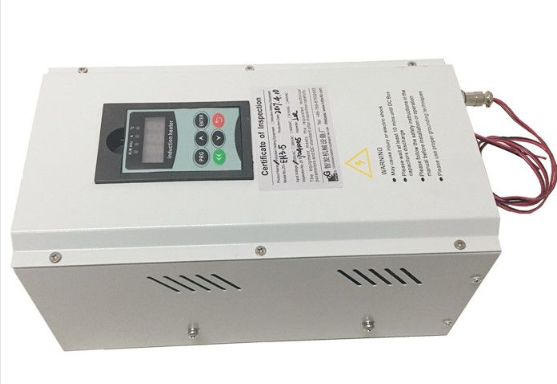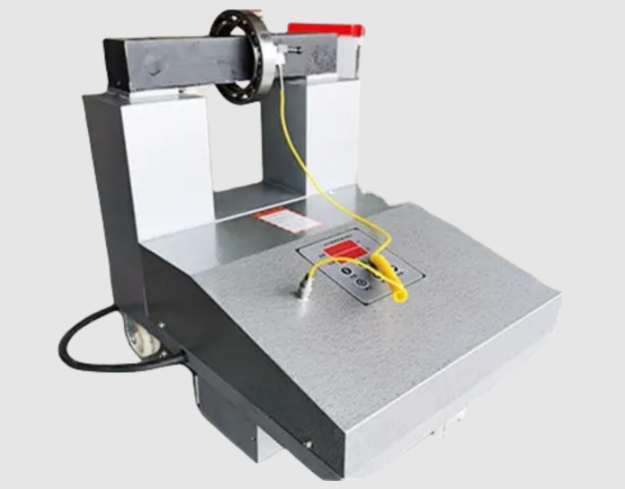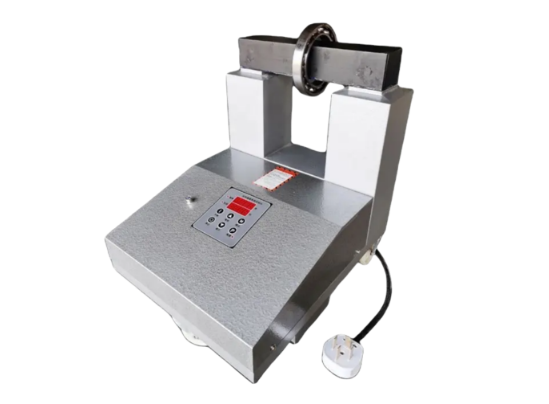Lower production environment temperature
Significant electricity savings
Good insulation and safety features
Industries like automotive, electronics, and food processing rely on these heaters for reliable results.

Heat Treatment
Heat treatment plays a vital role in manufacturing. You use an Air-cooled Electromagnetic Induction Heater to achieve precise and efficient results across several processes. Many sectors rely on this technology for consistent quality and improved productivity.
Hardening
You can harden metal parts quickly with induction heating. This process increases surface hardness and wear resistance.
Here is how different industries use induction hardening:
| Manufacturing Sector | Application Description |
|---|
| Automotive Industry | Treats parts like bearings, brakes, gears, joints, and shafts. |
| Aerospace Industry | Processes aeronautic components, including assembly parts and brakes. |
| Oil and Gas Industry | Finishes tubular goods, boosting pipe-life and strength. |
Induction hardening offers rapid heating, uniform temperature, and minimal distortion. You gain better control over the heat-affected zone, which improves product quality.
Tempering
Tempering reduces brittleness and increases toughness after hardening. You benefit from several advantages when using induction heating for tempering:
You also see minimal deformation and less oxidation. Induction tempering integrates easily into automated production lines, which helps you maintain consistent results.
Annealing
Annealing softens metals and improves workability. You achieve targeted and repeatable heating with induction annealing.
Key benefits include:
Precise control of heating profiles
High efficiency for lengthy treatments
Uniform heat distribution
Faster processing times
Cost savings due to reduced labor and energy use
Induction annealing requires less space and allows easy management of heating time and temperature. You ensure consistent quality and improved material properties.
Brazing and Soldering
Metal Joining
You can use an Air-cooled Electromagnetic Induction Heater to join metals with precision and speed. This method gives you several advantages over traditional flame-based techniques. Induction heating applies heat only where you need it, which keeps the rest of the part cool and reduces distortion. You also see less oxidation and scaling, so your finished joints look cleaner.
Here is a table that highlights the main benefits of using induction heating for brazing and soldering in industrial settings:
| Benefit | Description |
|---|
| Selective, localized heat | Heats only the joint area, minimizing part distortion and oxidation. |
| Production line adaptability | Fits manual, semi-automated, or fully automated operations for high-volume production. |
| Improved fixture life and simplicity | Reduces fixture wear and simplifies design by limiting heat exposure. |
| Repeatable and reliable joints | Delivers consistent, leak-free joints with precise energy control. |
| Improved safety | Eliminates open flames, lowering fire hazards and making your workplace safer. |
You achieve rapid and uniform heating, which shortens cycle times and boosts productivity. Induction heating also allows for easy automation, so you can scale up your operations with confidence.
Electronics Assembly
When you assemble electronic components, you need precise and reliable soldering. Induction heating gives you even and controlled heat, which is crucial for delicate parts. You avoid overheating sensitive components and ensure strong, consistent solder joints.
Precision: You get accurate and even heating for reliable connections.
Efficiency: Faster heating times help you increase output.
Safety: No open flames or hot surfaces reduce the risk of accidents.
Automation: You can integrate induction heating into automated assembly lines for consistent results.
You also benefit from high energy efficiency and flexible power adjustment. The system adapts to different environments and keeps electronics cool, which improves long-term reliability. Durable construction and easy integration make induction heating a smart choice for modern electronics manufacturing.
Melting and Forging
Small Batch Melting
You can use an Air-cooled Electromagnetic Induction Heater to melt metals in small batches with high efficiency. This method gives you precise control over temperature, which helps you avoid overheating and material loss. You benefit from rapid heating cycles, so you save time during production.
You can melt gold, silver, copper, and aluminum for jewelry, electronics, and prototyping.
You reduce contamination because the process does not require direct contact with flames or heating elements.
You achieve uniform melting, which improves the quality of your final product.
Tip: You can adjust the power settings to match the specific melting point of each metal. This flexibility helps you handle different materials without changing equipment.
Preheating
You improve forging outcomes when you use an Air-cooled Electromagnetic Induction Heater for preheating. You heat metal parts evenly before forging, which reduces the risk of cracks and defects. You also lower energy consumption and minimize oxidation.
Here is a comparison of forging results using old and new heating techniques:
| Parameter | Old Heating Technique | New Heating Technique |
|---|
| Max Decarburization (µm) | 250 | 150 |
| Oxidation Reduction (%) | N/A | 1.1 |
| Decarburization Reduction (%) | N/A | 40 |
You see less decarburization and oxidation, which means your forged parts have better surface quality and strength. You also experience faster heating times and more consistent results, making your forging process more reliable.
Shrink Fitting
Shrink fitting uses thermal expansion to assemble or disassemble tightly fitted components. You rely on an Air-cooled Electromagnetic Induction Heater to heat metal parts quickly and accurately. This method helps you achieve a secure fit without damaging surrounding materials.
Assembly
You can use shrink fitting to assemble gears, bearings, or sleeves onto shafts. Induction heating targets only the area you need, so you avoid unnecessary heat exposure. The process is clean and energy-efficient.
Here is a table that shows the main advantages of using induction heating for shrink fitting in assembly:
| Advantage | Description |
|---|
| Efficiency | Energy is used only during the heat cycle, unlike furnaces that need constant power. |
| Directed heating | Only the necessary location is heated, preventing damage to other components. |
| Fast heating | Induction heating provides rapid heating rates, speeding up the shrink fitting process. |
| Individual heating | Each component can be heated separately, allowing for better integration into the manufacturing process. |
| Controllability | Modern power supplies offer control capabilities, enabling feedback and parameter logging. |
| Other advantages | Induction heating is clean, with cooler induction areas compared to furnaces, and requires less space. |
You gain precise control over temperature and timing. This accuracy improves the quality of your assemblies and reduces the risk of errors.
Maintenance
You also use shrink fitting for maintenance tasks. Induction heating makes it easy to remove or adjust components without damaging them.
Consider these benefits when you use induction heating for maintenance:
Precision and reliability help you achieve a perfect fit every time.
Non-destructive heating maintains the strength and integrity of your materials.
Efficient and controlled heating reduces production times and energy use.
Reversible process lets you reheat and separate parts for repairs or adjustments.
Clean and safe operation keeps your workspace free from pollutants and residues.
You improve maintenance efficiency and flexibility. Induction heating supports quick repairs and adjustments, so you keep your equipment running smoothly.
Welding Support
Preheating
You improve welding results when you use an Air-cooled Electromagnetic Induction Heater for preheating. This technology helps you maintain the right temperature in the weld zone. You slow the cooling rate, which prevents brittle microstructures and reduces the risk of cracking. Induction heating supports preheating by minimizing temperature differences across the workpiece. You set up the equipment quickly, often in less than 15 minutes, and keep it in place during welding for easy repositioning.
Tip: Preheating with induction heating lets you control interpass temperatures automatically. You spend less time on manual adjustments and get more consistent welds.
Here are some key benefits you gain from using induction heating for welding support:
| Benefit | Description |
|---|
| Increased Safety | Only the workpiece heats up, so you lower burn risks and fire hazards. |
| Reduced Consumables | You use reusable insulation and durable coils, which cuts down on costly, disposable materials. |
| User Friendly | Simple setup and operation make your job easier. |
| Flexible Options | Air-cooled systems handle preheating needs up to 400°F without extra cooling. |
Post-Weld Treatment
You achieve cleaner and more precise welds when you use induction heating for post-weld treatment. The machine regulates heat effectively, which improves weld integrity and appearance. You slow the cooling rate after welding, helping prevent cracks and ensuring strong joints. Induction heating minimizes manual intervention, so you boost operational efficiency.
You support post-weld heat treatment by keeping the weld zone at the right temperature.
You enhance weld quality by reducing temperature differences and controlling the cooling process.
You benefit from equipment that remains in place, allowing for quick repositioning and faster workflow.
You rely on induction heating to deliver reliable results and safer working conditions. This technology helps you meet high standards in manufacturing and maintain consistent product quality.
Air-cooled Electromagnetic Induction Heater in Food Processing
You see Air-cooled Electromagnetic Induction Heater technology changing the way food gets processed. This equipment gives you precise temperature control and fast heating, which helps you maintain food quality and safety. Many food manufacturers use these heaters for cooking, baking, and frying because they deliver consistent results and save energy.
| Application | Description |
|---|
| Cooking | Fast and efficient heating without burning or overcooking food products. |
| Pasteurization | Ensures food safety by eliminating harmful microorganisms. |
| Sterilization | Extends shelf life by killing bacteria and pathogens in food products. |
| Sealing | Provides a secure closure for food packaging, enhancing preservation. |
Cooking
You use Air-cooled Electromagnetic Induction Heater systems to cook food quickly and evenly. The technology heats only the cookware or food, so you avoid burning or overcooking. You can adjust the temperature instantly, which helps you prepare delicate dishes with confidence. Facilities report energy savings of up to 40% when switching to advanced induction systems. You also see a decrease in auxiliary cooling power requirements, which lowers your operating costs.
Baking
You rely on induction heating for baking because it provides uniform heat distribution. This method lets you bake bread, pastries, and cakes with consistent texture and color. You control the temperature precisely, so you reduce waste and improve product quality. Many bakeries experience energy savings ranging from 30% to 80% after adopting Air-cooled Electromagnetic Induction Heater solutions. You also benefit from a cleaner working environment since there are no open flames.
Frying
You achieve better frying results with induction heating. The system responds quickly to temperature changes, so you maintain oil quality and prevent overheating. You produce crispy and evenly cooked foods every time. You also reduce energy consumption, which supports your sustainability goals. Independent testing shows that advanced semiconductor systems can lower energy use by 25-40% in frying operations.
Tip: You improve food safety and shelf life by using induction heating for pasteurization and sterilization steps.
Industrial Heating Solutions
You can solve many industrial heating challenges with an Air-cooled Electromagnetic Induction Heater. This technology uses electromagnetic fields to heat materials without direct contact. You gain precise temperature control and uniform heating, which improves your process reliability.
Steam Generation
You can use induction heating to generate steam for cleaning, sterilization, or process heating. The system heats water quickly and efficiently. You avoid open flames, which makes your workplace safer. Induction heaters transfer up to 84% of energy to the load, so you save on electricity costs. You also reduce maintenance because the system has fewer moving parts.
Product Drying
You improve drying processes by using induction heating. The technology delivers even heat, so you avoid hot spots and product damage. You can dry coatings, textiles, or food products with consistent results. The system adapts to continuous operations, which boosts your productivity.
| Benefit | Description |
|---|
| Uniform heating | Prevents uneven drying and improves quality |
| Energy savings | Reduces operational costs |
| Flexible control | Adjusts to different product requirements |
Reaction Shaft Heating
You use induction heating to maintain reaction shafts at precise temperatures. This control supports chemical reactions and material processing. You avoid overheating and improve product consistency. The absence of open flames lowers workplace hazards and supports safe, continuous operation.
Note: Induction coils work well in heat treatment, metal hardening, and brazing, which enhances your productivity and material properties.
On-site and Portable Applications
Preheat
You often face challenges when you need to preheat components on job sites. Air-cooled Electromagnetic Induction Heater systems help you overcome these obstacles. You do not need extra cooling water, so you set up equipment quickly and easily. You can heat large or hard-to-reach workpieces, which improves your workflow and reduces downtime. Smart controls with PID let you manage temperatures precisely. You protect your team with isolation transformers that prevent electrical hazards. The air-cooled design works well in tough environments, so you complete tasks efficiently.
Tip: Use portable induction heaters to preheat weld zones or mechanical parts before repairs. You save time and energy while ensuring consistent results.
Here is a table showing why these heaters work so well for on-site applications:
| Feature | Benefit |
|---|
| Smart controls with PID | Ensures precise temperature management |
| Isolation transformer | Enhances safety by preventing electrical hazards |
| Air-cooled design | Operates effectively in challenging environments |
| Fast and accurate induction heating | Increases efficiency and reduces energy waste |
| Modular and eco-friendly design | Adaptable for various applications and environmentally conscious |
| Versatile use | Suitable for heating various industrial components like ABS sensors and bearings |
Bake-out
You use Air-cooled Electromagnetic Induction Heater systems for bake-out procedures on job sites. You remove moisture and contaminants from equipment before starting up or performing maintenance. The portable design lets you move the heater to different locations, so you handle field maintenance tasks with ease. You do not need complex installation, which saves you time and money. You can heat inaccessible areas, which improves the reliability of your equipment and reduces the risk of failure.
You achieve uniform heating for bake-out, which protects sensitive components.
You reduce maintenance costs because the system requires minimal upkeep.
You adapt the heater for different tasks, making it a valuable tool for field engineers.
Note: Portable induction heaters help you maintain large electromechanical equipment and prepare surfaces for coating or welding. You increase job site efficiency and ensure high-quality results.
You gain many advantages when you use an Air-cooled Electromagnetic Induction Heater in manufacturing.
Aerospace manufacturers now finish thermoplastic parts faster and with better quality. You can explore these solutions to boost your own production results.
FAQ
What maintenance do air-cooled electromagnetic induction heaters require?
You only need to check air filters and electrical connections regularly. Clean the unit as needed. No water cooling means fewer parts to service.
Can you use air-cooled induction heaters for continuous production?
Yes. You can run these heaters for long periods. The air cooling system prevents overheating and supports reliable, nonstop operation.
How do air-cooled induction heaters improve workplace safety?
You avoid open flames and hot surfaces. The system heats only the target area. This reduces burn risks and fire hazards in your workspace.






